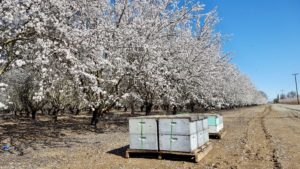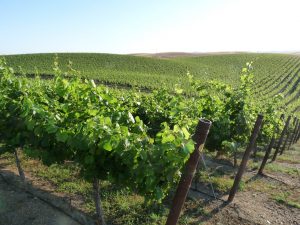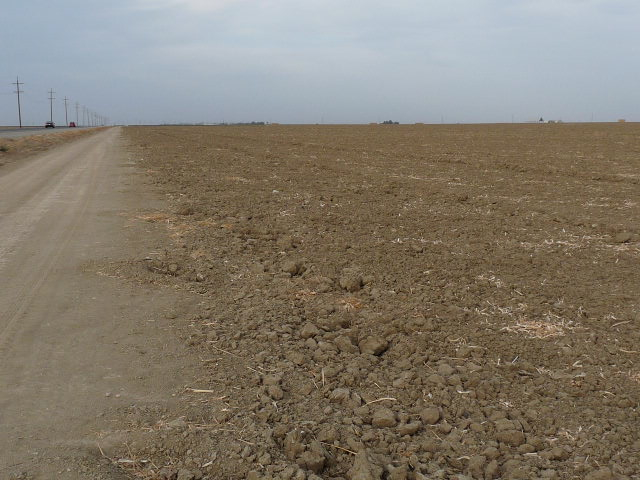Westlands: New Drought Affect Life in SJV
Five Things to Know About the Drought
From Westlands Water District
Every person who lives or works in Westlands Water District’s service area knows that California is facing yet another year of drought. We not only read and hear about it in the news, but we see it every single day in the fallowed fields around us. We feel it when we walk through the communities, like Mendota, Huron and Avenal. Drought conditions are affecting life in a very tangible way, especially here in the San Joaquin Valley.
There’s no doubt that the lack of water is having a negative impact on families and communities across the region. Westlands is working hard to collaborate with local, state, and federal partners to reduce the negative impacts of the drought. Here are five things – among many others – Westlands is doing to try to improve the short-term water supplies and advance long-term water reliability policies:
- Easing water purchases and transfers
Current drought conditions mean there just isn’t enough water to meet every demand. Not only have all south-of-Delta agricultural repayment and water service contractors had their Central Valley Project allocation reduced to 0 percent, but even municipal and industrial water users have been reduced to 25 percent of historic use. Water levels at lakes and reservoirs around the state are at historic lows.
At times like these, water purchases and transfers are critically important to support the communities and farms in the San Joaquin Valley. During drought, its essential to ensure that farmers receive sufficient water to meet their essential activities in order to sustain the community and the food people need. Westlands is working hard to purchase water, and to ensure that the water is available to the farmers in the District when they need it. That means working collaboratively with local, state, and federal partners, including regulators, to make it as easy as possible to move water as soon as possible.
- Groundwater stewardship
The farmers in Westlands have a long legacy of being good stewards of local groundwater resources – in fact, Westlands was formed, in part, because of concern with the groundwater aquifer underlying Westlands, with a focus on monitoring groundwater conditions. Farmers in Westlands have long known that groundwater management was critically important to the long-term viability of the region. The farmers’ and Westlands’ commitment to being thoughtful about groundwater use continues – not only because we’re now required to under the provisions of the Sustainable Groundwater Management Act (SGMA) but also because it’s the right thing to do to protect local aquifers.
- Supporting major infrastructure investments
The water infrastructure system that brings water to Westlands has suffered from decades of inadequate funding. There has been inadequate investment in new storage to keep up with increased social demands and climate change patterns. The inadequate storage facilities are unable to store sufficient water in the wet periods to sustain the San Joaquin communities in the dry years. There has also been inadequate investment in our conveyance system, which, as a result, has lost carrying capacity. This lost capacity means it costs more energy and money to move less water today than it did just years ago.
In pursuit of improved water infrastructure, the District is proud to support companion state and federal legislation designed to provide hundreds of millions of dollars in much-needed funding to help make necessary upgrades to our state’s major water infrastructure. We also have continually advocated for projects that can help increase above and below ground storage, such as the District’s Pasajero Recharge Project, to help improve water reliability during dry years.
- Implementing Voluntary Agreements
The Voluntary Agreements (VAs) – an effort started by then-Governor Jerry Brown and maintained by Governor Gavin Newsom – is aimed at protecting and restoring the Bay-Delta ecosystem while improving reliability for the 35 million people, nearly 8 million acres of farmland, and hundreds of thousands of acres of California wetlands that depend on the Sacramento-San Joaquin watershed.
Westlands is among a broad coalition that supports adoption and implementation of the VAs, which represent a 15 year science-based strategy that provides the resources needed to address the multiple factors that impair the ability of the Sacramento-San Joaquin watershed to serve the many needs California places on it.
- Farming the sun
Westlands and farmers within Westlands recognize the value of solar energy development, which not only helps California reach its carbon-free energy goals and mitigate impacts of climate change, but it also gives “new” value to agriculture land. There’s already more than 700 MW of operational solar energy in the Westlands footprint – enough electricity to power approximately 130,000 homes. Westlands and the farmers within Westlands are often considering or pursing new solar projects.
The reality of our changing climate means that droughts may become even more frequent. Westlands is continually working to proactively to ensure the investments are made to reduce climate and drought impacts – not only this year but for many years to come.























